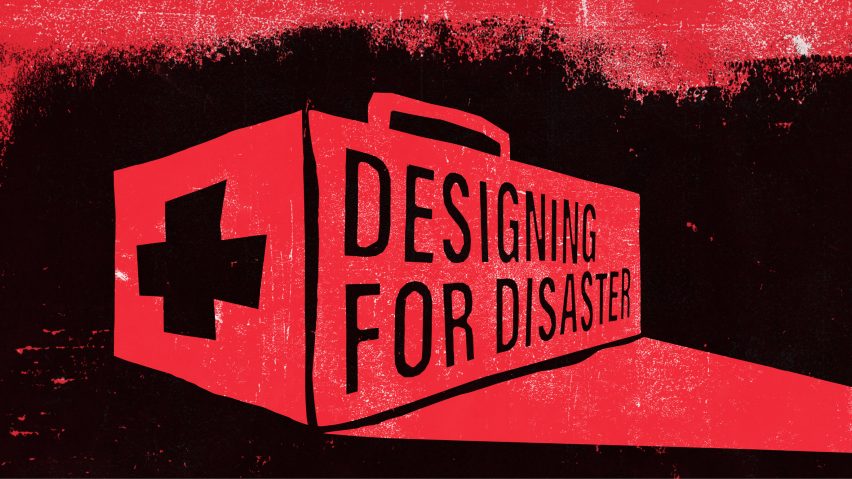
Disaster is well and truly upon us
Our latest series looks at how designers and architects can help manage natural hazards. Dezeen features editor Nat Barker explains why it's time to start Designing for Disaster.
This year, as in previous years, the world shook, then burned, then flooded, then did it all again. The February earthquake that struck Turkey and Syria claimed so many souls that authorities stopped counting at 56,000. In September another earthquake in Morocco took at least 2,946 lives, just two days before flooding in Libya killed literally untold thousands.
Meanwhile China saw unprecedented flooding, Cyclone Mocha caused devastation in Myanmar and Bangladesh, Hurricane Otis tore through eastern Mexico and wildfires shocked the Mediterranean, North America and Hawaii. Combined, and in addition to others, these disasters caused profound misery for countless millions.
Does it have to be this way? These kinds of events have typically been described as "natural disasters", but an increasingly vocal body of expert opinion argues there is no such thing. The term, they suggest, erroneously – even dangerously – implies a degree of inevitably to the immense human suffering that often follows a surge of the tide, a shift of the plates, a spark in a forest.
It certainly feels ever-more disingenuous to portray extreme-weather-related events as some act of God. The Intergovernmental Panel on Climate Change is unequivocal that human-driven climate change has been steadily upping the risk of such phenomena since the 1950s.
Warnings coming to bear
Directly off the back of terrible flooding in Pakistan and elsewhere last year, in 2023 it is difficult to shake the notion that long-standing warnings from meteorologists about natural hazards increasing in frequency and ferocity are now coming to bear.
In the US, for example, the National Oceanic and Atmospheric Administration declared as early as September that 2023 had surpassed the record for the annual number of climate-related disasters costing upward of $1 billion. Notably, it has now become the norm for media reports discussing such events to reference the role of global heating – a significant cultural turning point.
Even a best-case-scenario outcome from efforts to slow down global temperature increases will mean people in all corners of the world living under a heightened threat from natural hazards. And while earthquakes may not be linked to climate change, the world's continuing population growth is likely to result in more and more people residing close to fault lines.
That's why, following yet another summer punctuated by a series of dreadful events, Dezeen has decided to explore how architects and designers can help to reduce the impact of such disasters – to curb the human suffering rather than accepting it will get worse.
Responses around the world
Steering clear of the term "natural disasters", this series will examine possible solutions to prevent avoidable hazard events as well as mitigating the effects of the unavoidable ones, both through planning and recovery. It will hear from the designers already facing up to the reality that the risks are increasing, in addition to expert voices from outside the industry.
It will look at the ways in which different parts of the world are responding to the rising threat of disaster with their differing concerns and levels of resources – from flooding in Scandinavia to drought in The Sahel. It will consider how the already-affected are rebuilding.
Disaster is well and truly upon us – or rather, disasters are well and truly upon us. Ensuring catastrophe does not become the quotidian will require every tool in the box.
The illustration is by Thomas Matthews.

Designing for Disaster
This article is part of Dezeen's Designing for Disaster series, which explores the ways that design can help prevent, mitigate and recover from natural hazards as climate change makes extreme weather events increasingly common.